Popular categories
Looking for a yarn?
The yarn cost is calculated from the pattern’s smallest size and the yarn’s cheapest product type. Looking for an even better price? You might find it on the DROPS Deals!
Frosty's Christmas Kids
Knitted sweater with snowman. For children sizes 2 – 12 years. The piece is worked in DROPS Air.
DROPS Design: Pattern no ai-013-bn
Yarn group C
-----------------------------------------------------------
Sizes: 2 - 3/4 - 5/6 - 7/8 - 9/10 - 11/12 years
Sizes in cm: 92 - 98/104 - 110/116 - 122/128 - 134/140 - 146/152
Materials:
DROPS AIR from Garnstudio (belongs to yarn group C)
150-150-150-200-200-250 g colour 04, medium grey
50 g for all sizes in colour 01, off white
50 g for all sizes in colour 06, black
A left-over of colour 13, orange - for nose
A left-over of colour 11, peacock blue - for scarf
Or use:
DROPS NEPAL from Garnstudio (belongs to yarn group C)
250-250-250-400-400-500 g colour 0501, grey
50 g for all sizes in colour 100, off white
50 g for all sizes in colour 8903, black
A left-over of colour 2920, orange - for nose
A left-over of colour 8905, deep ocean - for scarf
DROPS DOUBLE POINTED NEEDLES AND CIRCULAR NEEDLE (40 + 60 cm) SIZE US 9/ 5.5 MM – or the size needed to get 16 stitches and 20 rows stocking stitch on 4" in width and 4" in height
DROPS DOUBLE POINTED NEEDLES AND CIRCULAR NEEDLE (40 + 60 cm) SIZE US 7 /4.5 MM – for rib.
----------------------------------------------------------
-------------------------------------------------------
Alternative Yarn – See how to change yarns here
Yarn Groups A to F – Use the same pattern and change the yarn here
Yarn usage using an alternative yarn – Use our yarn converter here
-------------------------------------------------------
The yarn cost is calculated from the pattern’s smallest size and the yarn’s cheapest product type. Looking for an even better price? You might find it on the DROPS Deals!
- English (US/in)
- Česky
- Dansk
- Deutsch
- Eesti keel
- English (UK/cm)
- Español
- Français
- Íslenska
- Italiano
- Magyar
- Nederlands
- Norsk
- Polski
- Português
- Suomi
- Svenska
- English (UK/cm), Bulgaria
- English (UK/cm), Croatia
- English (UK/cm), Greece
- English (UK/cm), Latvia
- English (UK/cm), Lithuania
- English (UK/cm), Romania
- English (UK/cm), Slovenia
- Česky, Slovakia
Pattern instructions
INFORMATION FOR THE PATTERN: RIDGE/GARTER STITCH (worked back and forth): 1 ridge = Knit 2 rows.
Back piece is worked back and forth with circular needle from the bottom to the top.
INCREASE TIP (sleeve):
Work until 1 st remains before marker, 1 YO, knit 2 sts (marker sits between these 2 sts), 1 YO. On next round purl yarn overs twisted to avoid holes.
Cast on 52-54-58-60-64-68 stitches with circular needle size US 7 /4.5 mm and medium grey Air or grey Nepal. Work rib (knit 1, purl 1) until the piece measures 2 inches, change to circular needle size US 9 /5.5 mm and then work stocking stitch until the piece measures 9-10-11-12-13-14 inches. Now cast off 1 stitch in each side for armhole = 50-52-56-58-62-66 stitches. Work until piece measures 13-14-15-17-18-20 in. Now cast off the middle 16-18-20-22-22-24 stitches for neck and each shoulder is finished separately. Continue with stocking stitch and cast off 1 stitch on next row from neck = 16-16-17-17-19-20 stitches left on shoulder.
Continue working until piece measures 34-37-40-44-48-52 cm/13½-14½-15 3/4-17 1/4-19-20 1/2 in, work 2 RIDGES, see description above, over all stitches, then LOOSELY cast off. The piece measures approx. 35-38-41-45-49-53 cm/13 3/4-15-16 1/8-17 3/4-19 1/4-21 inches from the shoulder down. Work the other shoulder in the same way.
Back piece with snowman
<p>
PATTERN:
See diagram A.2
Diagram A.2 (snowman): The whole diagram is worked in stocking stitch. Worked with 3 balls, so that you avoid long carrying loops on the wrong side. In other words, work with 1 ball of medium grey Air/ grey Nepal on each side of jumper and 1 ball of pattern colour in middle of jumper. NOTE: To avoid holes when changing colours, you need to twist the strands together. See Video: How to knit with 3 skeins at the same time
Back piece is worked back and forth with circular needle from the bottom to the top.
Cast on 52-54-58-60-64-68 stitches with circular needle size 4.5 mm and medium grey Air or grey Nepal. Work rib (knit 1, purl 1) until piece measures 2 in, change to circular needle size 5.5 mm and then work stocking stitch.
When piece measures approx. 2-3-3-4-4-4 inches work as follows from right side: 13-14-16-17-19-21 stitches stocking stitch, A.2 (= 26 stitches) - read PATTERN, 13-14-16-17-19-21 stitches stocking stitch. Continue in this way until piece measures 9-10-11-12-13-14 in. Now decrease 1 stitch in each side for armholes = 50-52-56-58-62-66 stitches. Continue with stocking stitch and A.2. When A.2 has been completed, work stocking stitch and medium grey Air / grey Nepal until piece measures 13-14-15-17-18-20 inches. Now cast off the middle 16-18-20-22-22-24 stitches for neck and each shoulder is finished separately. Continue with stocking stitch and cast off 1 stitch on next row from neck = 16-16-17-17-19-20 stitches left on shoulder.
Continue working until piece measures 34-37-40-44-48-52 cm/13½-14½-15 3/4-17 1/4-19-20 1/2 in, work 2 RIDGES (see description above) over all stitches, then LOOSELY bind off. Piece measures approx. 35-38-41-45-49-53 cm/13 3/4-15-16 1/8-17 3/4-19 1/4-21 inches from shoulder down. Work the other shoulder in the same way.
FRONT PIECE:
Cast on 52-54-58-60-64-68 stitches with circular needle size 4.5 mm and medium grey Air or grey Nepal. Work rib (knit 1, purl 1) until piece measures 2 inches, change to circular needle size 5.5 mm and then work stocking stitch. When piece measures approx. 2-3-3-4-4-4 inches work as follows from right side: 13-14-16-17-19-21 stitches stocking stitch, A.2 (= 26 stitches)- read PATTERN, 13-14-16-17-19-21 stitches stocking stitch. Continue in this way until piece measures 9-10-11-12-13-14 inches. Now cast off 1 stitch in each side for armholes = 50-52-56-58-62-66 stitches. Continue with stocking stitch and A.2, when A.2 has been completed, continue with stocking stitch and medium grey Air / grey Nepal until piece measures 12-13-14-16-17-19 inches. Now place the middle 10-12-14-16-16-18 stitches on 1 thread for neck and each shoulder is finished separately. Cast off to neck at beginning of each row from neck as follows: 2 stitches 1 time and 1 stitch 2 times = 16-16-17-17-19-20 stitches left on shoulder. Continue until piece measures 13- 15-16-17-19-20 inches, work 2 RIDGES over all stitches, then loosely cast off. Piece measures approx. 14-15-16-18-19-21 inches from the shoulder down. Work the other shoulder in the same way.
SLEEVE:
The sleeves are worked in the round.
Cast on 28-28-30-30-32-32 stitches with double pointed needles size 4.5 mm and medium grey Air or grey Nepal. Insert 1 marker thread at the beginning of the round = mid under sleeve. Work rib (knit 1, purl 1) until piece measures 1 ½ inches, change to circular needle size 5.5 mm and then work stocking stitch. When piece measures 2 inches increase 2 stitches mid under sleeve – read INCREASE TIP. Increase in this way every 1 ½-1 ½-1 ½-1 ½-1 ½- 1 ½ inches a total of 5-7-7-9-10-11 times = 38-42-44-48-52-54 stitches. When piece measures 11-13-14-16-17-19 inches loosely cast off. Work another sleeve in the same way.
ASSEMBLY:
Sew shoulder seams inside the cast-off edge.
Sew the front and back pieces together in the outermost stitch.
Sew in sleeves.
After sewing all the pieces together we knit the neckline.
NECKLINE:
Knit up from right side approx. 58 to 68 stitches (number of stitches must be divisible by 2) around the neck (including stitches on thread at front) with short circular needle size US 7/4.5 mm and medium grey Air or grey Nepal. Work rib (knit 1, purl 1) until piece measures 1 ½ inches. Cast off with knit over knit and purl over purl - make sure the cast-off edge is not tight.
NOSE:
Cast on 8 stitches with 2 strands orange Air or Nepal with needle size US 9/5.5 mm (leave strand lengths of approx. 12 inches, these are used as stuffing afterwards). Then continue with 1 strand. Purl 1 row. The next row is worked as follows: Knit 1, knit 2 together, knit 5 = 7 stitches. Purl 1 row. Knit 3, knit 2 together, knit 2 = 6 stitches. Purl 1 row. Knit 1, knit 2 together, knit 3 = 5 stitches. Cut the strand (leave a strand-length of approx. 12 inches; this is used to fasten), pull it through the remaining stitches. Sew together in the side and push the long strands from casting-on inside the nose as stuffing. Sew the nose to the middle of the snowman’s head on the front piece.
SCARF:
Cast on 62 stitches with needle size US 9/ 5.5 mm and peacock blue Air or deep ocean Nepal. Work 2 rows stocking stitch. Cast off. Thread the scarf through the sweater by the neck of the snowman (on the front piece) and back to right side on the other side of the neck. Tie the scarf ends together with a double knot in front.
SNOW, BUTTONS AND EYES:
Make 12 knots with off white Air or Nepal for snow and 5 knots with a left-over of black Air or Nepal for buttons and eyes as follows: 1 knot: Cut 1 strand of approx. 16 inches. Make 4 knots around a needle size US 9/5.5 mm - see diagram A.3 (i.e. make 3 LOOSE knots, make 1 more knot and tighten the strand on this knot = 1 knot). Position the knots on the front piece, thread the strand ends through each side of 1 stitch and tie at wrong side - see photo.
This pattern has been corrected. Click here to see the correction/s.
New yarn amount in the 3 smallest sizes: DROPS NEPAL from Garnstudio (belongs to yarn group C) 300-300-300-400-400-500 g colour 0501, grey
Diagram
All measurements in charts are in cm.

|
= off white Air/off white Nepal |

|
= medium grey Air/ Grey Nepal |

|
= black Air/ black Nepal |

|
= single knot |
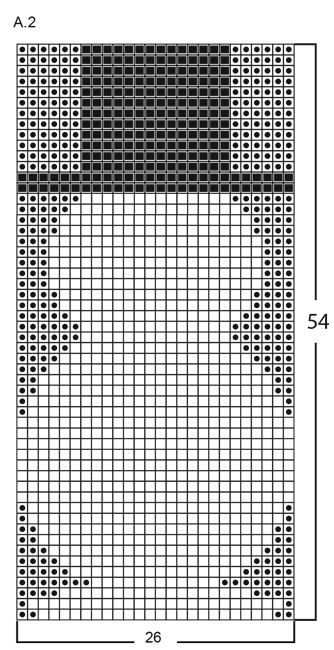

What can you do with our patterns? You can share DROPS patterns online, using the pattern original picture, materials, name and number. But you are NOT ALLOWED to reproduce the complete pattern digitally in any way. Yarn stores are welcome to use the DROPS pattern database to promote the sale of our assortment. You can print out our patterns, make as many copies as you’d like. The only thing we ask is that you don't make any changes / additions to the original printed document. And that the patterns according to the DROPS philosophy are given out to the consumers for free. Editorials that wish to publish our patterns in printed books or magazines can contact us for more information. The sale of garments based on DROPS patterns is permitted as long as they are sold as single items or per order. Further commercial use of the patterns is not permitted. It has to be clearly stated that the garment is made based on a design from DROPS DESIGN. The use of clothing labels of which DROPS DESIGN forms part is conditioned by the inclusion of the following text: “A DROPS DESIGN made by …..”. The use of DROPS photos for marketing purposes/sales is only permitted in connection with the use/sale of DROPS products. The photos may not be cut or edited and the logo should be clearly visible.
We reserve the right to withdraw the permission for use of our patterns at any time, notwithstanding the reason.
Each of our patterns has specific tutorial videos to help you.
These step-by-step tutorials might also help you:
Why is the knitting/crochet tension so important?
Knitting tension is what determines the final measurements of your work, and is usually measured per 10 x 10 cm. It is provided like so: number of stitches in width x number of rows in height - eg: 19 stitches x 26 rows = 10 x 10 cm.
The knitting tension is very individual; some people knit/crochet loosely while others work tightly. You adjust the knitting tension with the needle size, which is why the suggested needle size only serve as a guide! You need to adjust this (up or down) to ensure that YOUR knitting tension matches the knitting tension provided in the pattern. If you work with a different knitting tension than provided you will have a different yarn consumption, and your work will have different measurements than what the pattern suggests.
The knitting tension also determines which yarns can replace each other. As long as you achieve the same knitting tension you can replace one yarn with another.
See DROPS lesson: How to measure your tension/gauge
See DROPS video: How to make a gauge tension swatch
How do I know how many balls of yarn I need?
The required amount of yarn is provided in grams, eg: 450 g. To calculate how many balls you’ll need you first need to know how many grams are in 1 ball (25g, 50g or 100g). This information is available if you click on the individual yarn quality on our pages. Divide the amount required with the amount of each ball. For example, if each ball is 50g (the most common amount), the calculation will be as follows: 450 / 50 = 9 balls.
Can I use a different yarn than what the pattern suggests?
The important thing when changing from one yarn to another is that the knitting/crochet tension remains the same. This is so that the measurements of the finished piece will be the same as on the sketch provided. It is easier to achieve the same knitting tension using yarns from the same yarn group. It is also possible to work with multiple strands of a thinner yarn to achieve the knitting tension of a thicker one. Please try our yarn converter. We recommend you to always work a test swatch.
Please NOTE: when changing yarn the garment might have a different look and feel to the garment in the photo, due to individual properties and qualities of each yarn.
See DROPS lesson: Can I use a different yarn than the one mentioned in the pattern?
What are the yarn groups?
All our yarns are categorised into yarn groups (from A to F) according to thickness and knitting tension – group A contains the thinnest yarns and group F the thickest. This makes it easier for you to find alternative yarns to our patterns, should you wish to switch yarn. All yarns within the same group have a similar knitting tension and can easily replace each other. However, different yarn qualities have different structures and properties which will give the finished work a unique look and feel.
How do I use the yarn converter?
At the top of all our patterns you’ll find a link to our yarn converter, which is a helpful tool should you wish to use a different yarn than suggested. By filling in the yarn quality you wish to replace, the amount (in your size) and number of strands, the converter will present good alternative yarns with the same knitting tension. Additionally it will tell you how much you’ll require in the new qualities and whether you’ll need to work with multiple strands. Most skeins are 50g (some are 25g or 100g).
If the pattern is worked with multiple colours, every colour will have to be converted separately. Similarly, if the pattern is worked with several strands of different yarns (for example 1 strand Alpaca and 1 strand Kid-Silk) you will have to find alternatives for each, individually.
Why do you show discontinued yarns in the patterns?
Since different yarns have different qualities and textures we have chosen to keep the original yarn in our patterns. However, you can easily find options among our available qualities by using our yarn converter, or simply pick a yarn from the same yarn group.
It is possible that some retailers still have discontinued yarns in stock, or that someone has a few skeins at home that they would like to find patterns for.
The yarn converter will provide both alternative yarn as well as required amount in the new quality.
What size should I knit?
If you think it's hard to decide what size to make, it can be a good idea to measure a garment you own already and like the size of. Then you can pick the size by comparing those measures with the ones available in the pattern's size chart.
You'll find the size chart at the bottom of the pattern.
See DROPS lesson: How to read size chart
Why do I get the wrong knitting tension with the suggested needle size?
The needle size provided in the pattern serves only as a guide, the important thing is to follow the knitting tension. And since knitting tension is very individual, you will have to adjust the needle size to ensure that YOUR tension is the same as in the pattern – maybe you’ll have to adjust 1, or even 2 needle sizes, up or down to achieve the correct tension. For this, we recommend that you work test swatches.
Should you work with a different knitting tension than the one provided, the measurements of the finished garment might deviate from the measurement sketch.
See DROPS lesson: How to measure your tension/gauge
See DROPS video: How to make a gauge tension swatch
Why is the pattern worked top-down?
Working a garment top-down provides more flexibility and room for personal adjustment. For example it is easier to try the garment on while working, as well as making adjustments to length of yoke and shoulder caps.
The instructions are carefully explaining every step, in the correct order. Diagrams are adjusted to the knitting direction and are worked as usual.
How do I work according to a knitting diagram?
The diagram depicts all rows/rounds, and every stitch seen from the right side. It is read from bottom to top, from right to left. 1 square = 1 stitch.
When working back and forth, every other row is worked from the right side and every other row is worked from the wrong side. When working from the wrong side, the diagram will have to be worked reversed: from left to right, knit stitches are purled, purl stitches are knit etc.
When working in the round every round is worked from the right side and the diagram are worked from right to left on all rounds.
See DROPS lesson: How to read knitting diagrams
How do I work according to a crochet diagram?
The diagram depicts all rows/rounds, and every stitch seen from the right side. It is worked from bottom to top, from right to left.
When working back and forth every other row is worked from the right side: from right to left and every other row is worked from the wrong side: from left to right.
When working in the round, every row in the diagram are worked from the right side, from right to left.
When working a circular diagram you start in the middle and work your way outwards, counter clockwise, row by row.
The rows usually start with a given number of chain stitches (equivalent to the height of the following stitch), this will either be depicted in the diagram or explained in the pattern.
See DROPS lesson: How to read crochet diagrams
How do I work several diagrams simultaneously on the same row/round?
Instructions for working several diagrams after each other on the same row/round, will often be written like so: “work A.1, A.2, A.3 a total of 0-0-2-3-4 times". This means you work A.1 once, then A.2 is worked once, and A.3 is repeated (in width) the number of times provided for your size – in this case like so: S = 0 times, M = 0 times, L=2 times, XL= 3 times and XXL = 4 times.
The diagrams are worked as usual: begin with the first row in A.1, then work the first row in A.2 etc.
See DROPS lesson: How to read knitting diagrams
See DROPS lesson: How to read crochet diagrams
Why are the sleeves shorter in larger sizes?
The total width of the garment (from wrist-to-wrist) will be larger in the larger sizes, despite the actual sleeves being shorter. The larger sizes have longer sleeve caps and wider shoulders, so there will be a good fit in all sizes.
Where on the garment is the length measured?
The measurement sketch/schematic drawing provides information regarding the full length of the garment. If it’s a jumper or a jacket the length is measured from the highest point on the shoulder (usually closest to the neckline), and straight down to the bottom of the garment. It is NOT measured from the tip of shoulder. Similarly, the length of yoke is measured from the highest point on the shoulder and down to where yoke is split into body and sleeves.
See DROPS lesson: How to read a schematic drawing
What is a repeat?
Diagrams are often repeated on the round or in height. 1 repeat is the diagram the way it appears in the pattern. If it says to work 5 repeats of A.1 in the round, then you work A.1 a total of 5 times after/next to each other in the round. If it says to work 2 repeats of A.1 vertically/in height you work the entire diagram once, then begin again at the start and work the entire diagram one more time.
Why does the piece start with more chain stitches than it’s worked with?
Chain stitches are slightly narrower than other stitches and to avoid working the cast-on edge too tight, we simply chain more stitches to begin with. The stitch count will be adjusted on the following row to fit the pattern and measurement sketch.
Why increase before the rib edge when the piece is worked top-down?
The rib edge is more elastic and will contract slightly compared to, for example, stocking stitch. By increasing before the rib edge, you avoid a visible difference in width between the rib edge and the rest of the body.
Why increase in the cast-off edge?
It’s very easy to cast off too tightly, and by making yarn overs while casting off (and simultaneously casting these off) you avoid a too tight cast off edge.
See DROPS video: How to bind off with yarn overs (yo)
How do I increase/decrease on every 3rd and 4th row/round alternately?
To achieve an even increase (or decrease) you can increase on, for example: every 3rd and 4th row alternately, like so: work 2 rows and increase on the 3rd row, work 3 rows and increase on the 4th. Repeat this until the increase is complete.
See DROPS lesson: Increase or decrease 1 st on every 3rd and 4th row alternately
How can I work a jacket in the round instead of back and forth?
Should you prefer to work in the round instead of back and forth, you may of course adjust the pattern. You’ll need to add steeks mid-front (usually 5 stitches), and follow the instructions. When you would normally turn and work from the wrong side, simply work across the steek and continue in the round. At the end you’ll cut the piece open, pick up stitches to work bands, and cover the cut edges.
See DROPS video: How to knit steeks and cut open
Can I work a jumper back and forth instead of in the round?
Should you prefer to work back and forth instead of in the round, you may of course adjust the pattern so you work the pieces separately and then assemble them at the end. Divide the stitches for the body in 2, add 1 edge stitch in each side (for sewing) and work the front and back pieces separately.
See DROPS lesson: Can I adapt a pattern for circular needles into straight needles?
Why is the pattern slightly different than what I see in the photo?
Pattern repeats can vary slightly in the different sizes, in order to get the correct proportions. If you’re not working the exact same size as the garment in the photo, yours might deviate slightly. This has been carefully developed and adjusted so that the complete impression of the garment is the same in all sizes.
Make sure to follow instructions and diagrams for your size!
How do I make a women’s size garment into a men’s size one?
If you have found a pattern you like which is available in women’s size it’s not very difficult to convert it to men’s size. The biggest difference will be the length of sleeves and body. Start working on the women size that you think would fit across the chest. The additional length will be worked right before you cast off for the armhole/sleeve cap. If the pattern is worked top-down you can add the length right after the armhole or before the first decrease on sleeve.
Regarding additional yarn amount, this will depend on how much length you add, but it is better with a skein too many than too few.
How do I prevent a hairy garment from shedding?
All yarns will have excess fibres (from production) that might come off as lint or shedding. Brushed yarns (ie hairier yarns) have more of these loose, excess fibres, causing more shedding.
Shedding also depends on what is worn under or over the garment, and whether this pulls at the yarn fibres. It’s therefore not possible to guarantee that there will be no shedding
Below are some tips on how to get the best result when working with hairier yarns:
1. When the garment is finished (before you wash it) shake it vigorously so the looser hairs come off. NOTE: do NOT use a lint roller, brush or any method that pulls at the yarn.
2. Place the garment in a plastic bag and put it in your freezer - the temperature will cause the fibres to become less attached to each other, and excess fibres will come off easier.
3. Leave in the freezer for a few hours before taking it out and shaking it again.
4. Wash the garment according to the instructions on the yarn label.
Why does my garment pill?
Pilling is a natural process that happens to even the most exclusive of fibers. It's a natural sign of wear and tear that is hard to avoid, and that is most visible in high friction areas of your garment like a sweater's arms and cuffs.
You can make your garment look as new by removing the pilling, using a fabric comb or a pill/lint remover.
In the meantime, you can read the questions and answers that others have left to this pattern or join the DROPS Workshop on Facebook to get help from fellow knitters/crocheters!
You might also like...
Frosty's Christmas
Frosty's Christmas Kids
Frosty's Christmas Kids
Frosty's Christmas Kids
Frosty's Christmas Kids
Olaf
Frosty's Christmas Kids
Frosty's Christmas Kids
Frosty's Christmas
Frosty's Christmas Kids
Frosty's Christmas Kids
Frosty's Christmas Kids
Frosty's Christmas Kids
Olaf
Frosty's Christmas Kids
Frosty's Christmas Kids
Frosty's Christmas Kids |
|||||||||||||
 |
 |
||||||||||||
Knitted sweater with snowman. For children sizes 2 – 12 years. The piece is worked in DROPS Air.
DROPS Children 30-28 |
|||||||||||||
|
Back piece without snowman INFORMATION FOR THE PATTERN: RIDGE/GARTER STITCH (worked back and forth): 1 ridge = Knit 2 rows. Back piece is worked back and forth with circular needle from the bottom to the top. INCREASE TIP (sleeve): Work until 1 st remains before marker, 1 YO, knit 2 sts (marker sits between these 2 sts), 1 YO. On next round purl yarn overs twisted to avoid holes. Cast on 52-54-58-60-64-68 stitches with circular needle size US 7 /4.5 mm and medium grey Air or grey Nepal. Work rib (knit 1, purl 1) until the piece measures 2 inches, change to circular needle size US 9 /5.5 mm and then work stocking stitch until the piece measures 9-10-11-12-13-14 inches. Now cast off 1 stitch in each side for armhole = 50-52-56-58-62-66 stitches. Work until piece measures 13-14-15-17-18-20 in. Now cast off the middle 16-18-20-22-22-24 stitches for neck and each shoulder is finished separately. Continue with stocking stitch and cast off 1 stitch on next row from neck = 16-16-17-17-19-20 stitches left on shoulder. Continue working until piece measures 34-37-40-44-48-52 cm/13½-14½-15 3/4-17 1/4-19-20 1/2 in, work 2 RIDGES, see description above, over all stitches, then LOOSELY cast off. The piece measures approx. 35-38-41-45-49-53 cm/13 3/4-15-16 1/8-17 3/4-19 1/4-21 inches from the shoulder down. Work the other shoulder in the same way. Back piece with snowman
|
|||||||||||||
Diagram explanations |
|||||||||||||
|
|||||||||||||

|
|||||||||||||

|
|||||||||||||
|
Have you made this or any other of our designs? Tag your pictures in social media with #dropsdesign so we can see them! Do you need help with this pattern?You'll find tutorial videos, a Comments/Questions area and more by visiting the pattern on garnstudio.com. © 1982-2024 DROPS Design A/S. We reserve all rights. This document, including all its sub-sections, has copyrights. Read more about what you can do with our patterns at the bottom of each pattern on our site. |
|||||||||||||
With over 40 years in knitting and crochet design, DROPS Design offers one of the most extensive collections of free patterns on the internet - translated to 17 languages. As of today we count 304 catalogs and 11422 patterns - 11417 of which are translated into English (US/in).
We work hard to bring you the best knitting and crochet have to offer, inspiration and advice as well as great quality yarns at incredible prices! Would you like to use our patterns for other than personal use? You can read what you are allowed to do in the Copyright text at the bottom of all our patterns. Happy crafting!









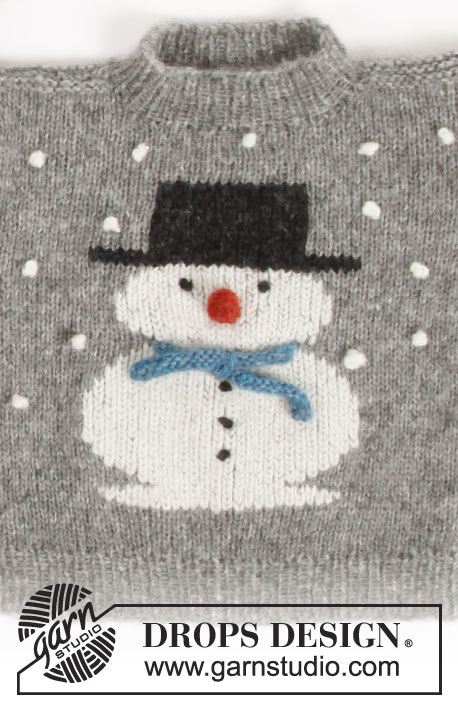

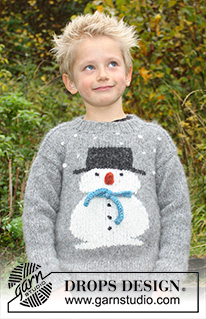
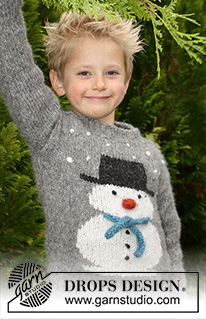

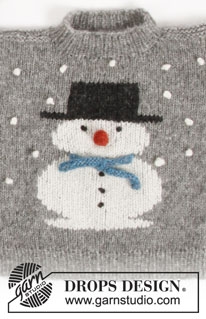






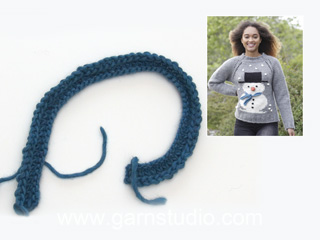
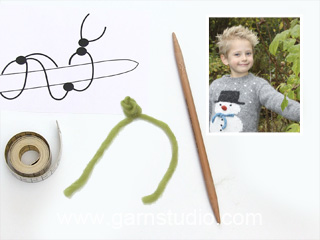














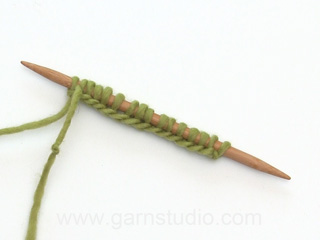
























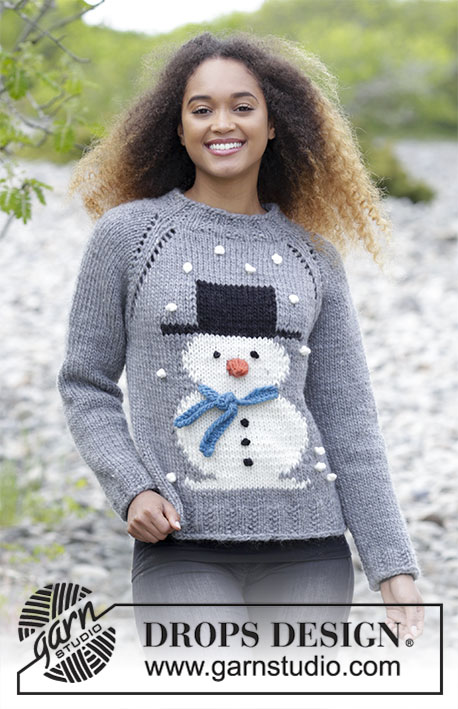






Comments / Questions (29)
Buonasera.vorrei realizzare questa maglia con i ferri del 4 (ho già la lana).mio figlio veste 8/9 anni.se seguo le indicazioni per il modello 11/12 anni può andare bene? Saranno sufficienti le maglie x ottenere la misura giusta ? Grazie
18.12.2020 - 22:38DROPS Design answered:
Buonasera Roberta, purtroppo in questa sede non possiamo fornirle un'assistenza così personalizzata, ma può rivolgersi al suo rivenditore DROPS di fiducia. Buon lavoro!
18.12.2020 - 22:43Buonasera, il maglioncino e' anche per bambine? grazie
02.10.2020 - 15:20DROPS Design answered:
Buongiorno Luciana, certo, il maglione è sia per bimbi che per bimbe. Verrà sicuramente benissimo per una bimba! Se vuole può condividere il risultato finale con noi! Non vediamo l'ora di vederlo! Buon lavoro!
02.10.2020 - 15:24Hallo,ich stricke den wunderschönen Schneemann Pullover für Kinder. Meine Frage wird das Muster auch in der Rückrunde gestrickt oder wird die Vorderseite nur wiederholt. Ich bin totale Anfängerin was Motiv stricken betrifft . Lg Gabriele
30.09.2020 - 11:16DROPS Design answered:
Liebe Frau Thesing, die Diagramme zeigen alle Reihen, dh die Hin- sowie die Rückreihen, hier lesen Sie mehr über Diagramme - Dieses Modell wird als DROPS-Along gestrickt, hier lesen Sie mehr. Viel Spaß beim stricken!
30.09.2020 - 14:01Hallo, muss ich bei Muster A2 die Fäden auch überkreuzen (d.h. den, den neuen grauen in der aktuellen Reihe mit dem weißen der vorigen Reihe), wenn der Farbwechsel nicht übereinanderliegt (d.h., der Faden über mehrere Maschen mitwandert)? Danke
23.09.2020 - 21:25DROPS Design answered:
Liebe Sabine, ja, die Fäden am beste immer miteinander kreuzen, dieses Video zeigt, wie man mit 3 Knäueln strickt. Viel Spaß beim stricken!
24.09.2020 - 09:31Ho provato a fare la taglia di 10 anni, ma mi ritrovo dalla spalla fino allo scalfo 40 maglie per il davanti e 40 per il dietro, in totale 80, mentre la manica ne ha 52, allora ho pensato di riprendere i bordi del davanti e del dietro e di diminuire le maglie in 3 giri: 6 diminuzioni al primo giro, 6 diminuzioni al secondo giro e 2 diminuzioni al terzo giro, così da avere 26 maglie sul davanti e 26 maglie sul dietro del maglione, che corrispondono alle 52 della manica.
10.06.2020 - 10:22I have been a knitter for more than 40 years. I have to say this is the worse written pattern I have ever read. Tonight I will finish this sweater for my grandson. I look forward to putting this pattern in the recyle bin before going to bed. I would not suggest a beginner knitter start with this one.
01.12.2019 - 02:40Hallo, wie können denn Drops Air oder Drops Nepal Garn angegeben werden; sie haben doch völlig unterschiedliche Lauflängen? oder muss Drops Air mit doppeltem Faden gestrickt werden? MfG M.W.
13.11.2019 - 12:02DROPS Design answered:
Liebe Frau Weihrauch, Air und Nepal gehören zur gleichen Garngruppe (C), dh sie haben beide gleiche Maschenprobe aber eine unterschiedliche Lauflänge, deshalb brauchen Sie eine unterschiedliche Gewichtanzahl/Knäuelanzahl. hier lesen Sie mehr über Garnatlternativen. Der Pulli wird dann mit nur 1 Faden Air oder Nepal gestrickt. Viel Spaß beim stricken!
13.11.2019 - 12:18I am confused with the A2 pattern. Do I count the rows from wrong side too into 54 rows? If I follow the pattern from RS only I seem to end up with too many rows. I had to unravel it twice. Example, to decrease from the body towards the neck do I knit 2 from the RS , thus knitting 2 coming back before I decrease again? I don't get this A2 instructions at all. Please help. Thank you.
25.10.2019 - 16:10DROPS Design answered:
Dear Mrs Maine, Diagram A.2 is 54 rows, ie read diagram from the right towards the left from RS and from the left towards the right from WS, in other words, diagram shows all rows both from RS and form WS. Happy knitting!
25.10.2019 - 16:36I just wish to say thank you for your lovely patterns and in particular for including in you video demo how to make the knots. I asked fir this last year and you listened. I am grateful and I will now knit this sweater.
02.10.2019 - 19:39Nel diagramma A2 ( non il nodo del diagramma A3 per la neve)il pallino nero indica il nodo singolo . Non ho capito come si realizza
02.12.2018 - 00:22DROPS Design answered:
Buongiorno Martina. Nel diagramma A.2 il quadrato con il tondino nero all’interno indica quale colore deve usare quando lavora quella maglia. Non ci sono nodi in questo diagramma. I nodi sono solo nel diagramma A3 e servono per la neve, i bottoni e gli occhi. Il video sotto può esserle di aiuto. Buon lavoro!
02.12.2018 - 14:49